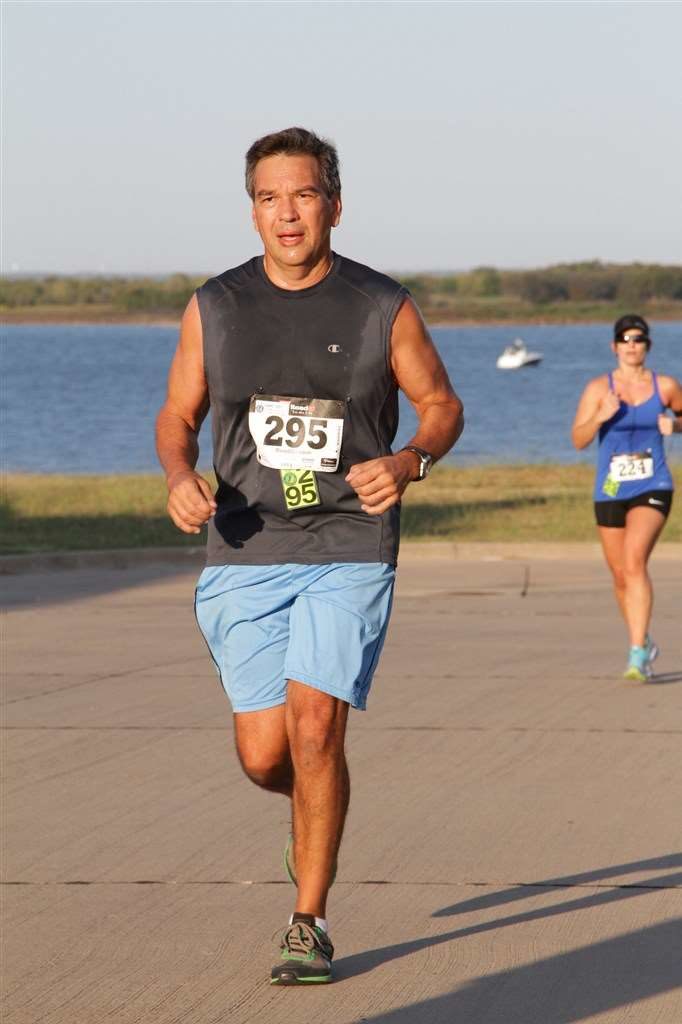Blog
Training for the 2015 Colony Half Marathon
From the Desk of Dr. Len
Training for the 2015 Colony Half Marathon
Dr. Len Lopez – Wednesday, October 21, 2015

It’s about that time again. I thought I would never do another half marathon after running last year’s race. However, the race is this weekend, and I’ve trained a little bit more than I did for last year’s race.
FYI…I didn’t train for last year’s half marathon. I got a wild hair Wednesday evening back in 2014, and ran about 5 miles on Thursday, just to see if I could do it. Then two days later ran The Colony Half Marathon. Don’t let me confuse you. I do enjoy running, and on a good week can run twice a week, but I do mostly interval running, as opposed to running 3-6 miles straight.
That being said, I have been anticipating this year’s half marathon, although I was sidetracked, a few weeks ago, when I ran the Tough Mudder in Dallas, which definitely took its toll on my body. More upper body pain than I expected. Also, my left calf and right quadriceps cramped up, like I have never had before, which kept me from wanting to run for several days after the ‘mudder.’
Anyway, I have to give Mariano, a good friend of mine, credit for encouraging me to run this race again. He gave me some good advice last year, especially when it came to lubing-up various parts of my body, so as not to chaff. Thank you for those tips.
With regards to my training. I do mostly interval running. I run anywhere between 30-60 seconds at a pretty fast pace and then walk and recover for 45-60 seconds…..than do it again 6-8 more times. The distance is anywhere between 100-300 yards at ¾ speed, which is almost like a sprint for an old guy like me.

I run on grass, especially if I’m doing any type of speed work. I won’t do any speed work, sprints on asphalt or concrete….it’s too hard on my body.
My plan, prior to this terrible heel pain I’ve developed over the last month, was to do some very slow distance running, so as to build up my aerobic threshold. Remember you increase your aerobic threshold (MaxVO2) when you run slow or below your aerobic threshold. Who would have thought, but it was Dr. Phil Maffetone who first taught me the whole concept of run slow – to run faster.
Remember, when you run, walk, bike, swim, dance, slow or slower – you activate your aerobic metabolism, which helps increase the number of mitochondria in your muscles. These little mitochondria, are little factories within your cells that make energy for your muscles. So if you have more factories, you can produce more energy and run longer and harder. Unfortunately too many people run, swim, bike, dance, etc. at too fast of a speed for their current level of fitness. This activates their ‘anaerobic’ metabolism, instead of their aerobic system, and inhibits the production of more mitochondria from being developed within your muscles.
This is again, why I always recommend wearing a heart rate monitor when doing your aerobic workout. I don’t particularly care how fast your heart races when you are doing an anaerobic workout, but when you perform an aerobic workout – you need to make sure you stay within the bounds of your aerobic capacity, which means keeping an eye on your heart rate.
I follow the 180 Rule, when I do an aerobic workout, which I talk about in both of my books. Briefly it is simply subtracting your Age from 180. (180 – your age = Target heart rate for aerobic exercise). Whatever that number is, should be the highest your heart beats when performing your aerobic workout. If you stay below that number, you’re activating your aerobic system and creating more mitochondria within the cells of your muscles.
When you go above that threshold, that number – you’re activating your anaerobic system, which is OK, but if you are trying to make your workout aerobic, make it aerobic. Stay within your aerobic capacity. The problem for most people is that they hate having to run, bike, swim, dance so slow – because they had no idea their heart was beating so fast when they worked out.
I hope that helps some of you, as I’ve said, I’m not an endurance athlete, but when you train smarter – rather than harder or longer, you have the capabilities of completing an endurance event, without specifically training for it.
I’m hoping my heel pain subsides enough to do the race, I’ll share more about the race next week.



